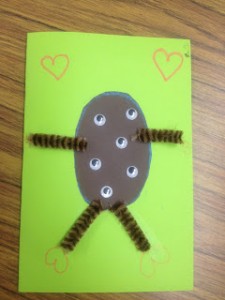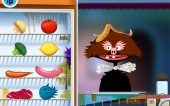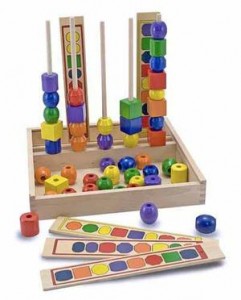Occupational Therapy
Rambling Secrets and Twitter
The title is actually not true. But the compulsive part of me wanted the title to go RST. And it did. So there.
Moving on.
SECRETS: A secret to share next week…check back by the end of next week…it’s exciting…well mostly to me. AHHAHAAHA. But I will give details as to how MAYBE it’s exciting to you too!
TWITTER: I’ve been tweeting a lot at www.twitter.com/msawesomenessOT although I’m re-building up followers as I’ve been at www.twitter.com/funkist for years.
My web designer and graphic designer have been helping me get this website and brand on track. The logo is about to change slightly and the website is continuously being tweaked while in its "emerging" stages.
Looooooooove
Karen
The Love Potato: A Unique Valentine's Day Craft Activity
The “love potato” is an awesomely “delightfully awkward” Valentine’s Day Craft that kids and parents alike think is hysterical and definitely unique. The front of the card is a potato with googley eyes all over it, and inside it says “Dear X, I have eyes only for you. Be My Valentine? Love, Kid”.
The “Love Potato” Valentine’s Day Craft Activity
Supplies: construction paper, googley eyeballs, writing/drawing utensils, scissors, glue, pipe cleaners or other item for arms/legs, imagination
Directions:
Choose color of card paper. Fold the paper in half to make the card.
Open card to do message first. Copy or compose the message, making sure to include “I have eyes only for you.” within it.
Draw a potato on a separate piece of brown construction paper. Cut out potato. Glue potato to front of card, in the middle. Add adhesive googley eyeballs to it (dollar store).
Carefully cut pipe cleaners [best by adult] for arms and legs, or use construction paper, crayons, anything else to add in arms/legs. Glue arms and legs of whatever material onto the potato.
Give to cherished person. Smile.
TO GRADE ACTIVITY (change difficulty level) depending on child’s strengths/weaknesses:
Sequencing:
Harder: Show finished product, have child determine sequence of steps (folding/cutting/gluing etc)
Easier: Have a finished product to show, but then do the task step by step with the child, so that task is broken down and child is given sequence.
Following Directions:
Harder: Have no supplies out besides finished product, have kids gather necessary supplies, ideally ones out of sight that require some instruction to find. Provide child minimal instruction and give more than 2 (ideally 3-4) instructions at a time.
Easier: Provide all or most supplies or have easily accessible. Give no more than 1-2 step directions at a time.
Folding:
Harder: Have child perform folding task independently
Easier: Demonstrate how to match corners, and/or perform for child.
Writing:
Harder: Have child make own lines with ruler, and compose without verbal or visual cues. Or have child copy information off board.
Easier: Have written model of desired writing, at “near-point” meaning right in front of the child, for child to copy.
Cutting:
Harder: Thinner potato lines to cut out, or have child cut out arms and legs as well.
Easier: Thicker potato lines, higher-contrast.
Gluing:
Harder: Liquid glue (hard to regulate pressure/squeeze hard enough).
Easier: Ideally a colored glue stick. Ensure child is adding to glue to back of potato, not to card front.
Eyeballs (educate that potatoes have “eyes”)
Harder: Have child pull off own eyeballs, especially smaller ones. If you don’t have the adhesive kinds, putting glue on the eyeballs is hard/good practice. If adhesive, taking the tiny paper off back can be challenging.
Easier: Provide eyeballs off chart, or use larger eyeballs.
Imagination:
Be silly! Kids think this is so funny.
SKILLS worked on with Love Potato activity:
- Cutting
- Gluing
- Folding
- Following directions
- Composing and/or copying writing
- Fine motor manipulation (googley eyeballs plus typical manipulation)
- Imagination/creativity/flexibility
- Cognition/Problem-solving including sequencing and following directions
Visual cuing for every other line – E-Z Edit
I love E-Z edit paper of www.barkercreek.com. Although I don’t use it for editing so much as a great visual cue for skipping every other line. Most of our children who MOST need to skip lines are the least likely to know how to do so and so this type of visual cue is awesome.
Toca Boca Apps: Kitchen Monsters
This is a fan-post of Toca Boca Apps, specifically their Kitchen Monsters which I occasionally utilize on my iPad with my kids in occupational therapy sessions.
There is (so far) only one app company I truly admire, respect, and enjoy. I’m not a fan of screen-time in general, with the exception of the children who truly benefit/need them to learn, but Toca Boca has won my heart.
I love them. Their kitchen monsters, hair salon, and robots app are my favorites for my children in occupational therapy. I usually use them as an occasional reward activity, although with any luck they will soon do some monster versions utilizing playful letters and numbers so I can use them in a more educational way at times. 🙂
Their kitchen monster one is my personal favorite (Hair Salon is a close second) about feeding these silly monsters. You have a refrigerator filled with food such as meat and brocolli, and you can saute, boil, microwave, chop, blend, whatever you want, to feed the hungry monsters. The monsters like some foods more than others, and may refuse to eat what you make, or even spit it out. It’s so silly and even my children with difficulties with mental flexibility laugh at this game. They LOVE when the monster spits their food out, or occasionally get their feelings (mildly) hurt if they made the monster a masterpiece.
The majority of my children will happily feed the kitchen monsters a single item that they cooked in some manner, such as a chopped up carrot. I have a few budding chefs, however.
One is a 4th grade boy (mother gave me explicit permission to post this) that makes his monster a full-course meal. He’ll saute some meat, boil and season some carrots, find a few other vegetables or items to prepare/cook to make a well-rounded and healthy meal, and then happily feeds the monster his 5-star masterpiece. It takes him quite a while to make the single meal, and he gets very involved in making sure it is delicious. It’s so awesome. I love the care he takes with these kitchen monsters, and his great grasp of cooking as well.
Another budding chef wants to make sure the monster gets to eat a little of every single food available to taste its deliciousness. He put some meat in the processor (if he had processed it just a little it would be ground meat) but processed it to the point that it was liquid, and called it a “meat smoothie” Yum. At the end he was proud he had “made a little feast for the monsters”.
Looove children and their innocent creativity.
Thanks Toca Boca, for amazing apps. I recommend checking all of their apps out and especially Kitchen Monsters and Hair Salon. They are available for iphone and ipad. I love their characters and their absurdity, which is something many of my OT kids need to work on. Although my budding chefs clearly have a lot of creativity!
Another story about my budding chefs who likes to make full-course five star meals, posted with his mom’s explicit and verbal permission.
.
.
.
.
Bathroom sanitizer pass for students
Child leaves hand sanitizer “pass” on their desk while in the bathroom. Genius.
Affirmations for Children/People with Low Self-Esteem
Multiple affirmations and lively beat
These downloadable mp3s are positive affirmation chants, specifically made for me on request by famed drummer Russell Buddy Helm. I had them made for my children who receive occupational therapy services, children who often struggle with low self-esteem. Although they are great for all children and adults alike. While these “power songs” can be chanted or focused on, the intent is for it to eventually just play in the background, if not annoying to the child.
Painter Marker, not Paper, for Student Names on Desks
No more name plates 🙂: Pinterest post
Sharpie Oil Based Painter Marker – No more student desk name tags: Amazon’s sharpie, may be cheaper at your local Staples or something
Picture to come soon that I know I have in my camera. By writing a student’s name on the desk, instead of using paper in any form, you have removed some of the visual clutter and literal items on the desk. Ideally the name is neat and reasonably small and in the upper hand corner of whatever is NOT dominant hand. IE a right hander will have theirs in upper left hand corner. Out of way. Only reason to have it is primarily for random staff that need to see whose desk is who. Like, for example, itinerant staff like me who need to be able to skim the room quickly for a desk and not spend 15 minutes searching desk innards for an OT kid work sample.
If you do want a diagram ON the desk, please make sure its neatly taped down or velcroed down as often as necessary for a kid who has some special needs. Please consider allowing it to be kept in desk, or consider whether child even accesses it. The less on the desk, the better.
Why Motor System Variability Can Be a Good Thing
Really intriguing study/article about how inconsistency/variability is actually teaching us a lot. Click link above for details. 🙂 Interesting to think about from the OT perspective.
"“The analogy I often use is evolution,” Ölveczky said. “In evolution, genes change, and that’s how you can learn as an organism. It’s the same with the motor system. The way the motor system learns is by changing things, not through recombination, but by changing the output, and then carefully monitoring how each of those changes results in better or worse performance.
“This may seem like a fairly counterintuitive finding because you could take the view that the more precisely you can produce a movement, the more control you have, so the better you should be able to learn,” Ölveczky said. “But that’s not necessarily true. What we’re saying is … you need to explore first to find the solution that best fits your needs for a task. Then once you find it, you can exploit it and try to reduce variability. I think this should give people some understanding and appreciation of the errors they make, and that they’re actually, fundamentally, a design feature rather than a flaw in what their brain is doing."
How To Use A Single Toy To Work on Any Motor Skill
http://www.melissaanddoug.com/bead-sequencing-learning-set
I recently wrote Melissa and Doug (an amazing high quality brand that is in like every store you will ever walk into, except well, gas stations or something), and let them know I love their products but that they are missing a few pieces. For example, they often have great “extension activities” written on the back of their products that are developmentally awesome and clearly written by someone very skilled. Yet the average person won’t understand WHY these extension activities are helpful/useful, especially in regards to its applications to daily life skills. Many people think play is a waste of time and children are better off spending their time learning their academic skills. These people need education, because play is the number one way that children learn about their environment, and they need really strong foundational skills in their awareness of their own body and brain’s capabilities before they can truly apply it most successfully to the academic environment. All play toys can be used to work on academic skills and/or skills applicable to daily life interactions, with just some creative tweaking.
For example, I took this toy off their site at random and instantly spouted off the following ideas. Their website talks about how it works on matching, sequencing, and fine motor skills. Great, and I realize they don’t want to write a sixty page essay on its other uses. But I can. AHAHAHAAHAHA. It can be slightly modified – easily and without set-up – to work on many other types of skills. Gross motor, fine motor, sensory motor, ocular motor, visual motor…executive functioning skills, speech skills, general cognition, etc etc.
Any OT worth their salt (salts not worth that much these days though, so maybe worth their titanium), would be able to easily rattle off another six thousand trillion jillion zakillion more ideas within seconds. And I never exaggerate. Okay, one time I did. Like sixty years ago.
Bed-making Energy Conservation: OT tip of day
It can be easier to make your bed while still in it. While lying down spread the sheets into their most appropriate areas and then slip out. It’s either good enough or easier to finish. Be like a starfish!







